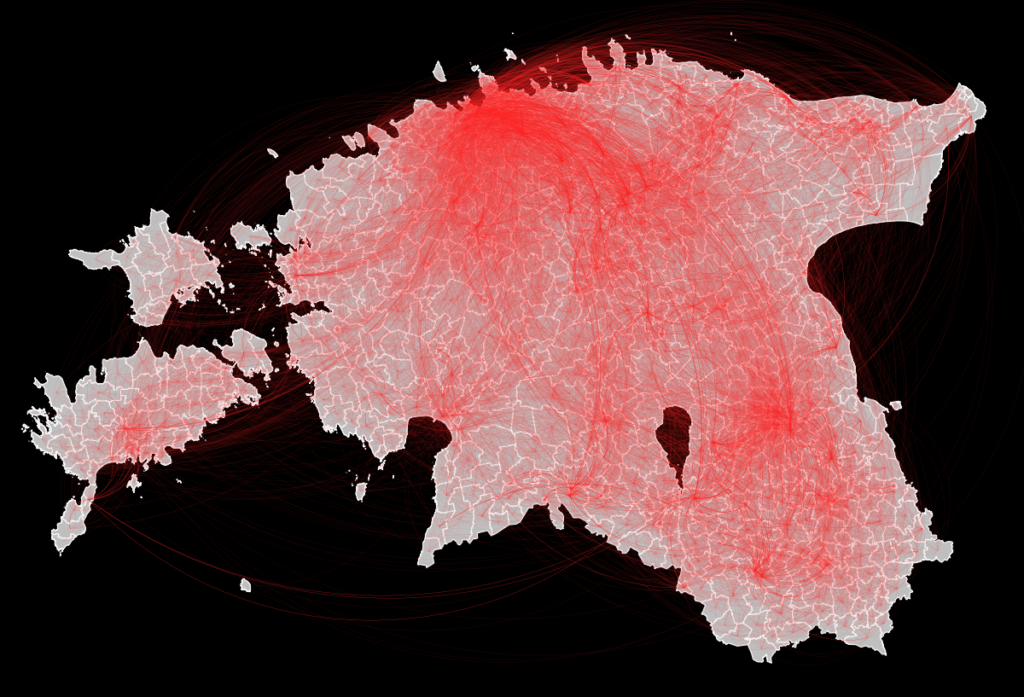To find the optimal combination of measures for controlling the spreading rate of a virus we need to know the effectiveness of the planned measures and their socio-economic cost. The project aims to make a tool, a computer code that predicts the population’s infection rate as a function of time, depending on the number and regional distribution of initial virus carriers in Estonia, imposed restrictions (movement bans, closure of shopping centers, schools and / or kindergartens, etc.) and degree of voluntary social distancing. To that end, a SEIR-model-based Monte-Carlo model is used together with Estonian demographic data, mobile-positioning-based human mobility and traffic intensity data, and characteristics of the virus (e.g. distribution function of the incubation period). We create the capacity of operatively predicting the value of the reproduction number $R_0$ depending on the administrative measures. The government can use these predictions for making knowledge-based decisions.
| Project code | COVSG22 |
| Start date | September 1, 2020 |
| End date | December 31, 2021 |
| Project category | Research |
| Lead | Jaan Kalda |
| Personnel | Aleksei Tepljakov, Azer Ramazanli, Juri Belikov |
| Other personnel | Heiko Herrmann, Mart Ratas, Siiri Silm, Ago Tominga, Anto Aasa |
| Partners | Mobility Lab (University of Tartu), Positium |
| Funding | ETAG |
| Project link | https://www.etis.ee/Portal/Projects/Display/efd33aac-c44d-40b5-8180-9ebf471266fb?lang=ENG |


